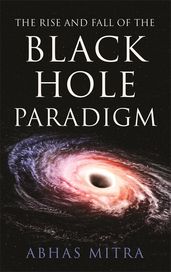The Rise and Fall of the Black Hole Paradigm
Synopsis
Black holes have turned out to be the cornerstone of both physics and popular belief. But what if we were to realize that exact black holes cannot exist, even though their existence is apparently suggested by exact general relativistic solutions, and Roger Penrose won the 2020 Nobel Prize in Physics ‘for the discovery that black hole formation is a robust prediction of the general theory of relativity’? While it might seem far-fetched to claim so, it will be worth remembering that the finest theoretical physicists like Albert Einstein and Paul Dirac did not believe in black holes, and Stephen Hawking finally thought that there are no exact black holes.
While the black hole paradigm has become commonplace in popular consciousness, in the last decade, noise has consistently grown about the many physical effects which can inhibit the formation of exact mathematical black holes. In The Rise and Fall of the Black Hole Paradigm, Abhas Mitra shows us how, much before these developments, he had proven why the so-called black holes must only be black hole pretenders. He identified these black hole candidates to be Magnetospheric Eternally Collapsing Objects (MECOs) and, along with Darryl J. Leiter and Stanley L. Robertson, generalized them. Recent evidence for the existence of strong magnetic fields around so-called black holes may provide confirmations of his claim.
